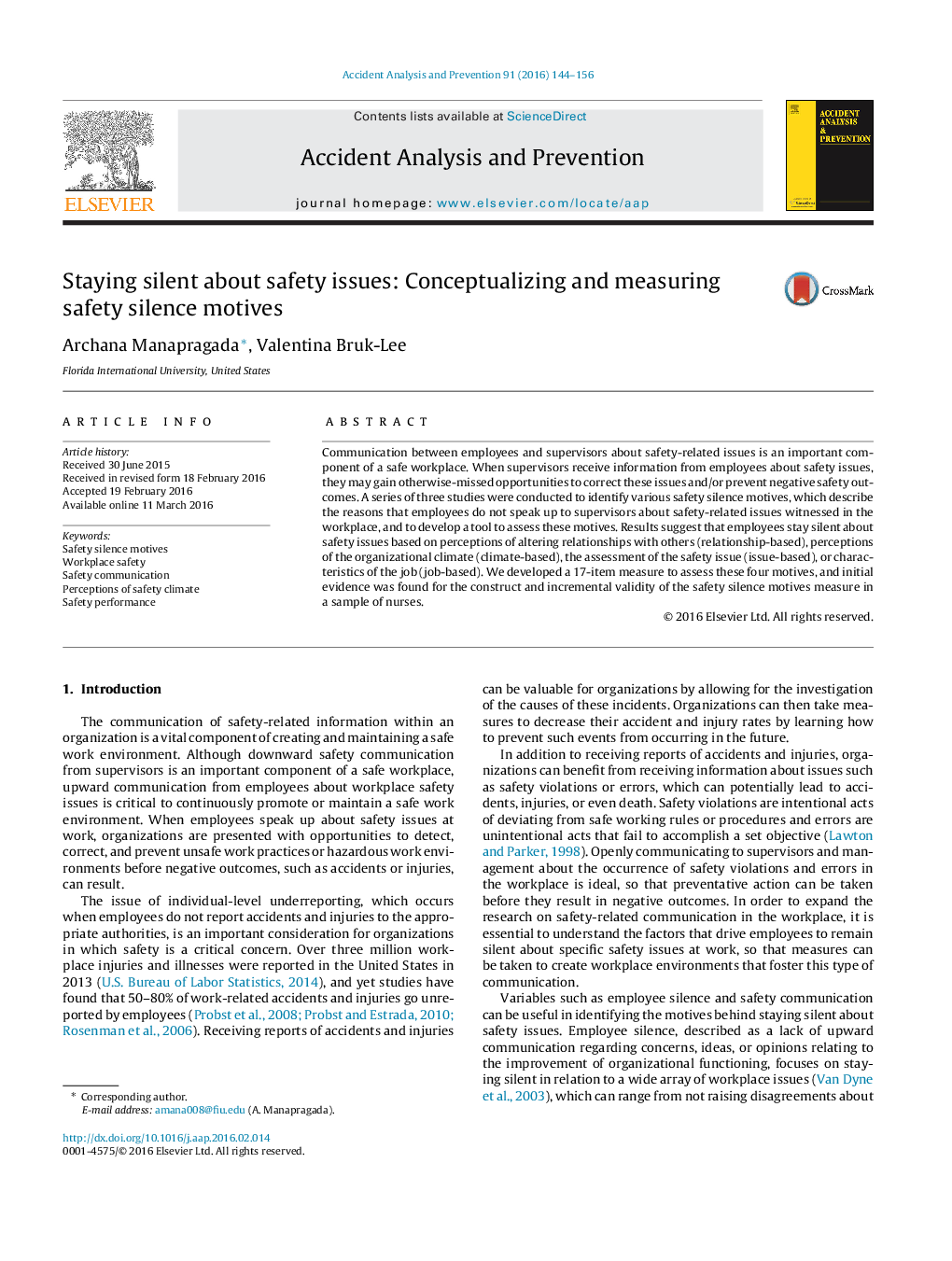| Article ID | Journal | Published Year | Pages | File Type |
|---|---|---|---|---|
| 571989 | Accident Analysis & Prevention | 2016 | 13 Pages |
•Safety silence can have relationship, climate, issue, or job-based motives.•A 17-item measure was developed to assess the four types of safety silence motives.•Initial evidence for the validity of the safety silence motives measure was found.•Safety silence motives are related to several workplace safety constructs.•Issue and job-based safety silence explain unique variance in safety performance.
Communication between employees and supervisors about safety-related issues is an important component of a safe workplace. When supervisors receive information from employees about safety issues, they may gain otherwise-missed opportunities to correct these issues and/or prevent negative safety outcomes. A series of three studies were conducted to identify various safety silence motives, which describe the reasons that employees do not speak up to supervisors about safety-related issues witnessed in the workplace, and to develop a tool to assess these motives. Results suggest that employees stay silent about safety issues based on perceptions of altering relationships with others (relationship-based), perceptions of the organizational climate (climate-based), the assessment of the safety issue (issue-based), or characteristics of the job (job-based). We developed a 17-item measure to assess these four motives, and initial evidence was found for the construct and incremental validity of the safety silence motives measure in a sample of nurses.
